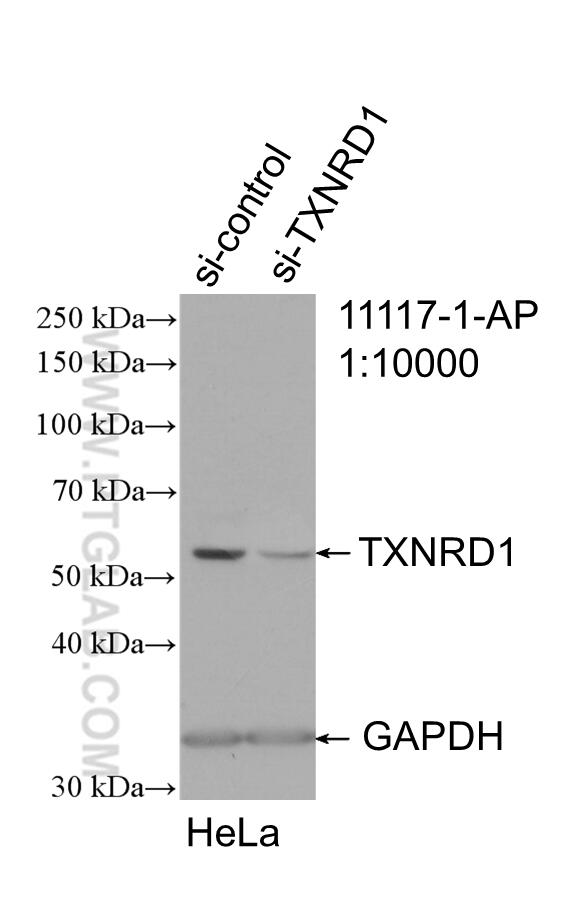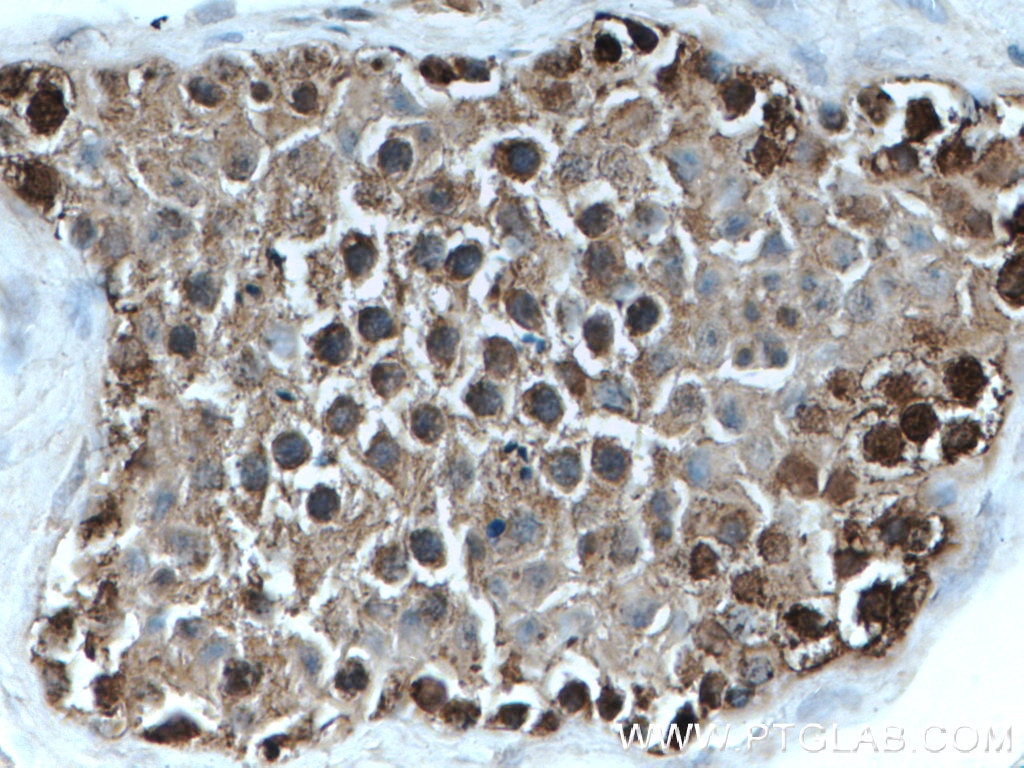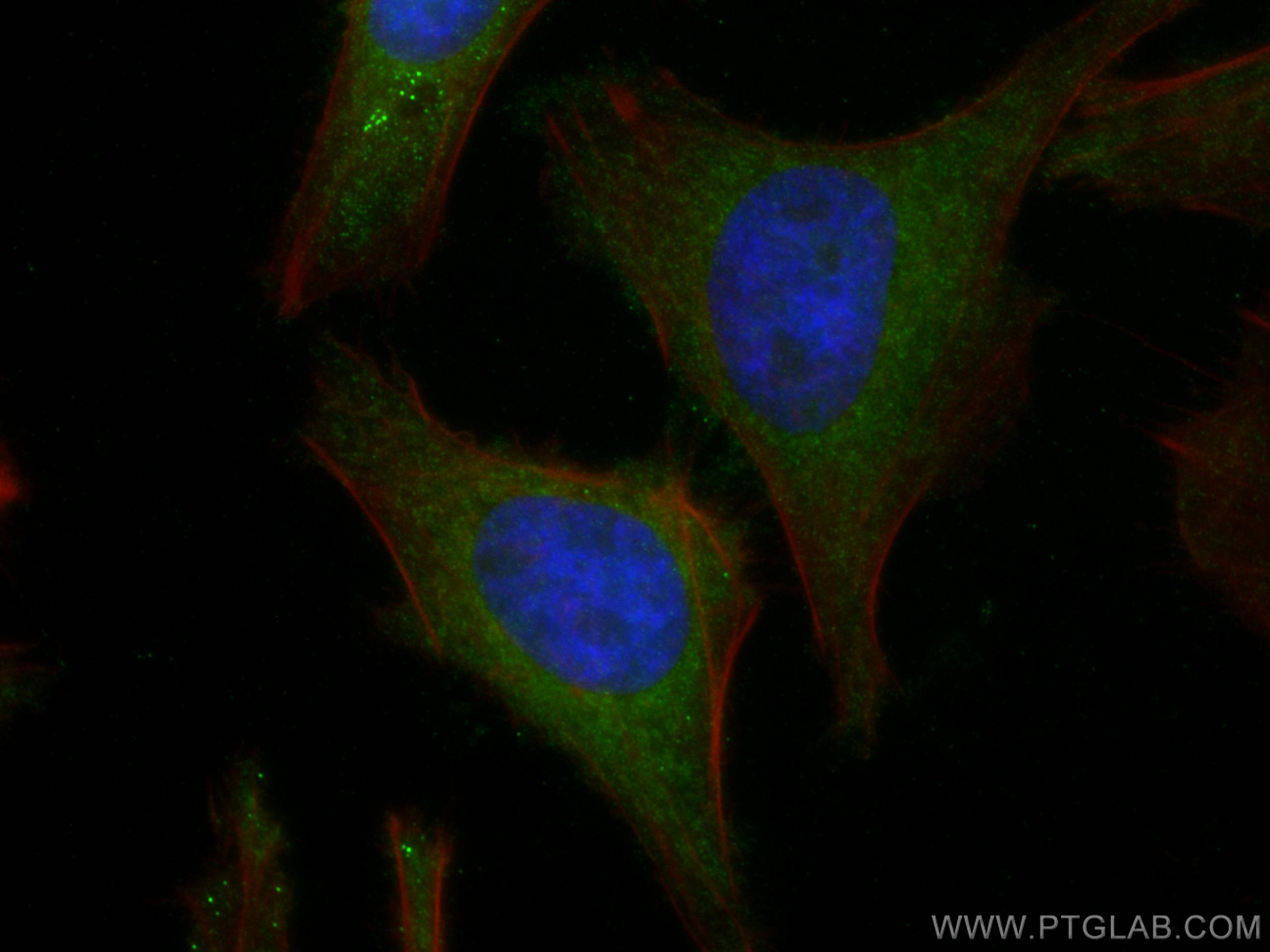Validation Data Gallery
Tested Applications
| Positive WB detected in | HeLa cells, MCF-7 cells, Jurkat cells, mouse heart tissue, rat heart tissue |
| Positive IHC detected in | human testis tissue, human breast cancer tissue, mouse testis tissue Note: suggested antigen retrieval with TE buffer pH 9.0; (*) Alternatively, antigen retrieval may be performed with citrate buffer pH 6.0 |
| Positive IF/ICC detected in | HeLa cells |
Recommended dilution
| Application | Dilution |
|---|---|
| Western Blot (WB) | WB : 1:3000-1:10000 |
| Immunohistochemistry (IHC) | IHC : 1:300-1:1200 |
| Immunofluorescence (IF)/ICC | IF/ICC : 1:50-1:500 |
| It is recommended that this reagent should be titrated in each testing system to obtain optimal results. | |
| Sample-dependent, Check data in validation data gallery. | |
Published Applications
| KD/KO | See 5 publications below |
| WB | See 54 publications below |
| IHC | See 9 publications below |
| IF | See 4 publications below |
Product Information
11117-1-AP targets TXNRD1 in WB, IHC, IF/ICC, ELISA applications and shows reactivity with human, mouse, rat samples.
| Tested Reactivity | human, mouse, rat |
| Cited Reactivity | human, mouse, rat |
| Host / Isotype | Rabbit / IgG |
| Class | Polyclonal |
| Type | Antibody |
| Immunogen | TXNRD1 fusion protein Ag1618 相同性解析による交差性が予測される生物種 |
| Full Name | thioredoxin reductase 1 |
| Calculated molecular weight | 55 kDa |
| Observed molecular weight | 55 kDa |
| GenBank accession number | BC018122 |
| Gene Symbol | TXNRD1 |
| Gene ID (NCBI) | 7296 |
| RRID | AB_2210113 |
| Conjugate | Unconjugated |
| Form | Liquid |
| Purification Method | Antigen affinity purification |
| UNIPROT ID | Q16881 |
| Storage Buffer | PBS with 0.02% sodium azide and 50% glycerol , pH 7.3 |
| Storage Conditions | Store at -20°C. Stable for one year after shipment. Aliquoting is unnecessary for -20oC storage. |
Background Information
Thioredoxin reductase-1 (TXNRD1) is uniquely capable of utilizing electrons from NADPH to recover the reduced state of TRX1. Interestingly, TXNRD1 is upregulated in many human malignancies and promotes cancer progression, and attenuation of TXNRD1 levels effectively suppresses the growth of tumor cells (PMID: 31384178). TXNRD1 is also upregulated in many human malignancies and functions as a prognostic factor for many tumors, such as oral squamous cell carcinomas, lung cancer, breast cancer, and astrocytomas. TXNRD1 protein levels were analyzed by inmmunoblotting. Bands of ~55 kDa for TXNRD1 were observed. IHC analysis suggested TXNRD1 was mainly located in the cytoplasm. (PMID: 28536696, PMID: 20584310)
Protocols
| Product Specific Protocols | |
|---|---|
| WB protocol for TXNRD1 antibody 11117-1-AP | Download protocol |
| IHC protocol for TXNRD1 antibody 11117-1-AP | Download protocol |
| IF protocol for TXNRD1 antibody 11117-1-AP | Download protocol |
| FC protocol for TXNRD1 antibody 11117-1-AP | Download protocol |
| Standard Protocols | |
|---|---|
| Click here to view our Standard Protocols |
Publications
| Species | Application | Title |
|---|---|---|
Redox Biol Fast regulation of the NF-κB signalling pathway in human skeletal muscle revealed by high-intensity exercise and ischaemia at exhaustion: Role of oxygenation and metabolite accumulation. | ||
J Immunother Cancer Nanoparticle delivery of miR-21-3p sensitizes melanoma to anti-PD-1 immunotherapy by promoting ferroptosis. | ||
Cell Death Dis Elovanoid-N34 modulates TXNRD1 key in protection against oxidative stress-related diseases | ||
Cancer Res Natural allelic variations in glutathione peroxidase-1 affect it subcellular localization and function. | ||
Nucleic Acids Res Nucleolin binds to a subset of selenoprotein mRNAs and regulates their expression. | ||
Biomed Pharmacother TrxR/Trx inhibitor butaselen ameliorates pulmonary fibrosis by suppressing NF-κB/TGF-β1/Smads signaling |










